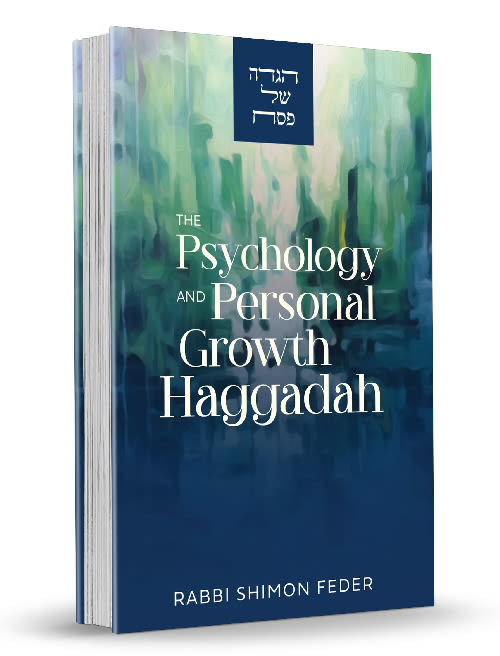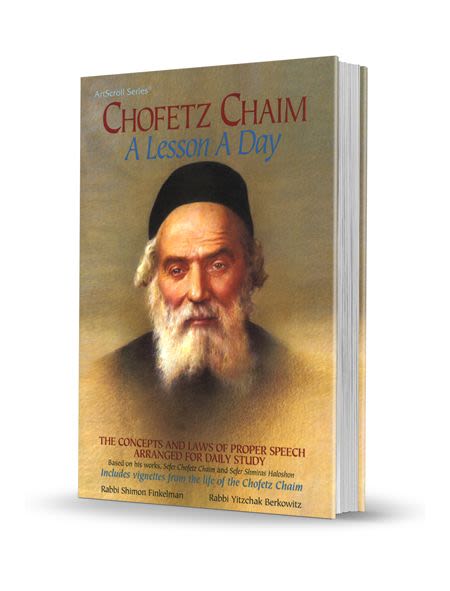
Rabbi Shneur Zalman – The Alter Rebbe
Date of Passing: 24-Tevet. Rabbi Shneur Zalman was the founder of Chabad Chassidut and authored the "Tanya" for his chassidim.

Few luminaries in Jewish history, particularly in modern times, have made as lasting and profound a contribution to our spiritual heritage as Rabbi Shneur Zalman. His works embrace the entire spectrum of Jewish thought—mysticism, philosophy, psychology, ethics, and law—and represent an expression of unparalleled creative genius.
The Early Years
The rise and growth of the Chassidic movement was rapid. In and through it even Jewish peasants, traders, laborers and craftsmen found themselves in the warm haven of the Torah universe from which they had been excluded because of their limited scholarship.
One of the greatest of the outstanding Chassidic personalities was Rabbi Shneur Zalman of Liadi. This saintly man became the founder of Chabad Chassidism, a movement which developed into one of the strongest and most dynamic branches of Chassidism. This movement, founded in Lithuania in 5533 (1773), grew far beyond the boundaries of this once mighty center of Jewish life, and gained enthusiastic adherents throughout the world.
Rabbi Shneur Zalman was a direct descendant of the Maharal of Prague. His great-grandfather later lived in a village in Posen. The family moved eastward, wandering through Galicia and Poland and finally settled in Vitebsk, then a flourishing center of Torah and Talmudic scholarship. Here Shneur Zalman was born. Here, too, he received his first instruction, and from his earliest youth he showed unusual brilliance, diligence, and devotion to his studies.
In order to develop his son’s scholarship further, Rabbi Baruch took him to a renowned teacher of the time, Rabbi Issachar Ber of Kobilnik, who lived in Lubavitch. Under Rabbi Issachar Ber’s tutelage the young scholar traversed the “sea of the Talmud” in all directions and familiarized himself with Kabbalah, the esoteric side of traditional Torah wisdom.
In his spare time the eager boy further increased his knowledge through the study of science and mathematics. Before long, Rabbi Issachar Ber sent for Rabbi Baruch and told the overjoyed father of his student: “There is nothing more that I can teach your son; he has grown beyond me.” Rabbi Baruch now took Shneur Zalman to Vitebsk. The twelve-year old boy won immediate recognition and fame as a genius, and he was accepted as an equal by the great scholars of the city.
Marriage
In later years, a wealthy man selected Shneur Zalman as a son-in-law and supported him so that he could devote his undivided attention to the exclusive study of Torah. At the age of twenty, this brilliant young man, with his wife’s consent, left his home and family to search for the fulfillment of a yearning in his soul. Despite all his knowledge, he felt that he was missing an element of Jewish religious experience which could not be captured in the solitude of the four walls of his own study.
Two centers of Jewish learning and leadership competed for his attention: Vilna, the main seat of Talmudic scholarship and the fortress of opposition to the young yet rapidly growing Chassidic movement; and Mezeritch, the seat of Rabbi Dovber, the famed Maggid of Mezeritch, heir to the ideology of Rabbi Israel Baal Shem Tov and to the leadership of the Chassidic movement.
From the very outset, Rabbi Shneur Zalman realized that the sober, rationalistic atmosphere of Vilna and its scholars, headed by the Gaon Rabbi Eliyahu, could not offer him that for which he was searching. Already an acclaimed Torah scholar, Rabbi Shneur Zalman felt that his need was not for Talmudic instruction but for guidance in the service of G‑d (“avodah”). Therefore he decided to try Mezeritch where a new world called. A world, it was said, that taught its people how to pray.
Master of the Revealed and Hidden Dimensions
The first impression of the inner circle of disciples gathered about Rabbi Dovber of Mezeritch was not very encouraging to Rabbi Shneur Zalman. He had expected a large academy brimming with sparkling personalities, scholars, and wise men. Instead, he found a group of unobtrusive people who, at first sight, seemed to possess little that made seeking worthwhile. Nor was he particularly inspired by the pious admonitions that the Maggid of Mezeritch addressed to the crowd that gathered in his synagogue.
He was about to leave, when his eyes were opened to the true nature of the master and his inner circle. Rabbi Shneur Zalman had decided to pay his respects to the Maggid before returning to Liozna. He entered the master’s house and stood among the crowd, when the eyes of Rabbi Dovber singled him out. They bored deeply into the very abyss of Shneur Zalman’s soul, exploring and evaluating its every quality.
After a few minutes of pregnant silence, the master not only told him what had been in his mind, but without having been asked, gave Shneur Zalman astoundingly simple, yet convincing answers to some test questions the young scholar had prepared in order to assure himself of a worthy master. Deeply impressed, Rabbi Shneur Zalman begged to be admitted into the inner circle of Rabbi Dovber’s disciples.
A new world now unfolded itself before the eager eyes of the scholar from Liozna as he absorbed the Maggid’s daily lectures on the teachings of the Baal Shem Tov.
Rabbi Dovber’s young son, Rabbi Abraham, who by his saintly conduct earned the title of “the Angel” (Malach), was his guide to this higher sphere of wisdom and knowledge. In return, Rabbi Shneur Zalman instructed him in the realm of Halachah – the major part of the Talmudic and Rabbinic literature dealing with Jewish law.
Thus, the young Rav absorbed the fundamentals of Chassidism and satisfied the yearning in his soul which had driven him from his home and family. He never regretted having chosen Mezeritch in preference to Vilna.
Rabbi Dovber commanded Rabbi Shneur Zalman, then at most twenty-five years old, to rewrite the Code of Jewish Law so as to include the latest decisions. Roughly two hundred years had passed since Rabbi Joseph Caro had published his master-work, the Shulchan Aruch, and throughout this period generations of Jewish codifiers and commentators called “Acharonim” had added to and elucidated what was to have been the final word in the discussion of Jewish law. Rabbi Shneur Zalman gave full consideration to this further two hundred years of commentary on the Shulchan Aruch, and by careful editing, he presented the Code of Jewish Law in a precise and handy form.
Founds Chabad-Lubavitch
After the death of Rabbi Dovber on Kislev 19, 5533 (1772) his disciples separated. Each one shouldered the task of propagating Chassidism in the country assigned to him. Rabbi Shneur Zalman inherited the most difficult of all missions. He was to capture the stronghold of the Mitnagdim – the opponents to the spreading of Chassidism in Lithuania, for the Chassidic ideology and way of life.
He began a campaign to induce more Jews to settle on the land and engage in farming. From about the year 5532 (1772), Rabbi Shneur Zalman was engaged in an extensive plan to induce large numbers of Jews living on the Russo-Polish border to move eastwards, into the interior of Russia, where the opportunities for economic existence were more promising.
Rabbi Shneur Zalman also devoted himself to fund-raising activities in order to support the newly established Chassidic settlements in the land of Israel.
During the years of struggle for the betterment of the spiritual life and economic conditions of his co-religionists, the Rav developed his magnificent philosophy of Chabad Chassidism.
Rabbi Shneur Zalman demanded much more than the unquestioning adherence required by the other schools of Chassidic thought. Whereas their ideology centered on the righteous “Tzaddik” as a person of supernatural powers, he posed the idea of the Tzaddik as a spiritual guide, a teacher, rather than a miracle worker.
The Chassid was to train himself for a life of faith and service to G‑d, which would carry him to the highest level of Chabad, the three powers of intellect: Wisdom, Understanding, and Intellect (Chochmah, Binah, and Daat), forming a bond between heaven and earth.
Upon this basic thought Rabbi Shneur Zalman built the structure of Chabad ideology. Total man serves G‑d with mind, heart and deed in unison, each complementing the other. The mind understands, the heart feels, and the hand performs.
The substance of Rabbi Shneur Zalman’s teachings can be found in his major contribution to Rabbinic literature, the Likutei Amarim, better known as the Tanya, after the first word of this exposition. It contains a concise outline of his philosophical system as a way of life, and attests to his vast knowledge and the depth of his understanding and mastery of both the esoteric and esoteric teachings of our Sages. Rabbi Shneur Zalman, the Baal haTanya, was also the author of many other works which are classics of Chabad literature.
Arrest, Release, and the French Pursuit
With the rapid expansion of the Chassidic movement under Rabbi Shneur Zalman’s leadership, its opponents resorted to the most extreme measures to undermine his work. He was denounced to the Russian government as a traitor and heretic, an accusation leveled also against certain other chassidic rabbis.
In the year 5558 (1798), Rabbi Shneur Zalman was arrested and taken to the capital, St Petersburg, where he was thrown into prison to face trial for high treason and subversive political activities. On Kislev 19 of the same year, he was freed on the express orders of the Czar. This date has since been a festival amongst Chabad Chassidim.
Hardly two years after the first attempt, the extreme opposition again denounced Rabbi Shneur Zalman on false charges. Again he was brought to the Russian capital and imprisoned, but as before, he was cleared of all guilt and released with the approval of Czar Alexander I, who shared the admiration of his predecessor for the venerable leader of the Lithuanian Chassidic movement.
During the war between France and Russia, Rabbi Shneur Zalman espoused the Russian cause. Accompanied by his family and a number of close disciples he took to the road, barely keeping ahead of the onrushing French armies. Though he escaped capture several times, Rabbi Shneur Zalman’s weakened body was not equal to the harrowing strains of the flight. He became seriously ill and died in Piena, a small village near Kursk, on Tevet 24, 5573 (1812) He was laid to rest in the Jewish cemetery at Haditz, a small place near Poltava.
It used to be said: “In Vilna they knew how to study; in Mezeritch they knew how to pray.” Rabbi Shneur Zalman, the saintly Sage of Liadi, knew how to do both. He bridged the gap between the mind and heart by his masterly synthesis of intellect and emotion within the framework of Chabad ideology.
***
Used with permission from www.chabad.org.












Tell us what you think!
Thank you for your comment!
It will be published after approval by the Editor.